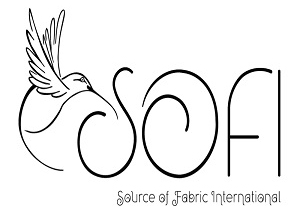Linen fabric has long been celebrated for its timeless elegance and durability, making it a favorite among designers and crafters alike. When sourced wholesale by the bolt, it offers an economical solution for those looking to create stunning garments, home décor, or upholstery projects. The versatility of linen allows it to be used in everything from lightweight summer dresses to robust table linens, appealing to a wide range of tastes and applications.
Buying linen fabric in bulk not only ensures a consistent quality but also opens up opportunities for significant savings. As the demand for sustainable and natural textiles grows, wholesale linen becomes an attractive option for businesses aiming to meet consumer preferences. Whether you’re a small business owner or a DIY enthusiast, exploring wholesale options can elevate your projects while keeping costs in check.
Overview of Wholesale Linen Fabric
Wholesale linen fabric provides a practical choice for various projects. This fabric offers durability and is well-suited for garments and home décor. Purchasing linen by the bolt allows for cost savings, making it an attractive option for both businesses and DIY enthusiasts.
Linen is breathable and moisture-wicking, which makes it ideal for warm climates. Its natural fibers allow for a comfortable wear, enhancing its appeal. Wholesale options ensure consistent quality, helping customers maintain a high standard in their products.
Sustainability plays a key role in the textile industry. Linen is derived from flax plants, which require less water and fewer chemicals than other crops. This eco-friendly aspect attracts consumers who prioritize sustainable practices. As demand for such textiles grows, wholesale linen fabric stands out as a responsible choice.
Whether for fashion, upholstery, or table linens, sourcing linen fabric in bulk streamlines the procurement process. Businesses can manage inventory effectively and meet customer needs without sacrificing quality or style.
Benefits of Buying by the Bolt
Buying linen fabric by the bolt offers several advantages. The following points detail these benefits.
Cost-Effectiveness
Purchasing linen by the bolt significantly reduces costs. Businesses enjoy lower prices per yard compared to retail options. For DIY enthusiasts or small projects, bulk purchases can provide savings on large quantities. Additionally, fewer trips to the store minimize transportation costs and time.
Variety of Options
Buying linen by the bolt opens access to a wide range of colors and textures. Customers can choose from different weights, patterns, and finishes. This variety allows for flexibility in design choices, meeting specific project needs. Sourcing in bulk also increases the chances of obtaining consistent lots, ensuring uniformity across projects.
How to Choose the Right Linen Fabric
Choosing the right linen fabric enhances the quality of a project. Consider several key factors to make a good selection.
Fabric Weight and Composition
Fabric weight directly affects the use and feel of linen. Lightweight linen, typically around 4 to 5 ounces per yard, works well for garments like shirts and dresses. Medium-weight linen, around 5 to 6 ounces per yard, is suitable for curtains and table linens. Heavyweight linen, usually 6 ounces or more, provides durability for upholstery and outerwear.
Composition is also important. Pure linen contains long fibers for strength and breathability. Blends with cotton or rayon offer softness while maintaining some linen benefits. Look for blends that suit the intended use, balancing comfort and durability.
Color and Pattern Selection
Color and pattern selection shapes the overall look of any project. Choose colors that complement the intended space or style. Neutrals like beige or gray offer versatility, while bold colors add visual interest. Patterns, including stripes or floral designs, can enhance the fabric’s appeal, but ensure they align with the overall design theme.
Consider lightfastness and washability when selecting colors. High-quality linen retains color well after multiple washes. Opt for patterns that match the fabric’s purpose, ensuring that they don’t overpower the design.
Tips for Working with Linen Fabric
Working with linen fabric requires attention to detail to achieve the best results. The following tips focus on essential practices that enhance the experience and outcome.
Pre-Washing and Care
Pre-washing linen fabric is vital to remove any manufacturing residues and to preshrink the material. Users should wash linen in cold water with a mild detergent, then tumble dry on low or air dry to maintain fabric integrity. Ironing linen after washing keeps it looking crisp. Since linen wrinkles easily, this step is crucial for a polished look.
Sewing Techniques
Using the right sewing techniques helps achieve clean finishes with linen fabric. Straight stitches work best for seams, while a zigzag stitch prevents fraying. Users should choose a larger needle, like a size 90/14, to accommodate the fabric’s thickness. It’s also helpful to use a walking foot for even feeding through the sewing machine. Lastly, pressing seams as you sew offers a neat finished appearance, making the final product look more professional.
Conclusion
Investing in wholesale fabric by the bolt opens up a world of possibilities for both businesses and creative individuals. The combination of cost savings and high-quality options makes it a smart choice for anyone looking to enhance their projects. With its natural elegance and eco-friendly properties, linen fabric is not just a trend but a sustainable choice that meets modern consumer demands.
By choosing the right supplier and understanding fabric characteristics buyers can ensure their projects stand out. Whether for fashion or home décor linen offers versatility that few other materials can match. Embracing wholesale linen fabric is a step toward achieving both aesthetic appeal and practical functionality in every creation.
Frequently Asked Questions
What are the benefits of linen fabric?
Linen fabric is known for its elegance, durability, and versatility. It breathes well, wicks moisture, and is eco-friendly, making it ideal for both garments and home décor. Its natural properties enhance comfort in warm climates while contributing to sustainable fashion.
Why should I buy linen wholesale?
Purchasing linen wholesale offers significant cost savings and ensures consistent quality. It’s an excellent choice for businesses and DIY enthusiasts looking to minimize expenses while meeting growing consumer demand for sustainable textiles.
What projects are suitable for linen fabric?
Linen is versatile and can be used for various projects, including clothing, curtains, table linens, and upholstery. Its breathability and durability make it an ideal option for both fashion and home décor applications.
How do I choose the right linen fabric for my project?
Consider the fabric’s weight and composition: lightweight linen is best for garments, medium-weight for curtains, and heavyweight for upholstery. Also, select colors and patterns that complement your design while keeping in mind washability and lightfastness.
What are the top suppliers of wholesale linen fabric?
Two notable suppliers include Supplier A, which offers a wide range of linen fabrics for apparel and home décor at competitive prices, and Supplier B, which focuses on sustainable practices, providing eco-friendly options with flexible ordering and fast shipping.
How do I care for linen fabric?
To maintain linen fabric, always pre-wash it to remove residues and preshrink it. For washing, use cold water and mild detergent, and avoid bleach. Proper care helps preserve the fabric’s integrity and extend its lifespan.
What sewing techniques work best with linen?
When sewing with linen, use straight stitches for seams and zigzag stitches to prevent fraying. A larger needle and walking foot are recommended for better handling, ensuring a smoother sewing experience without damaging the fabric.


